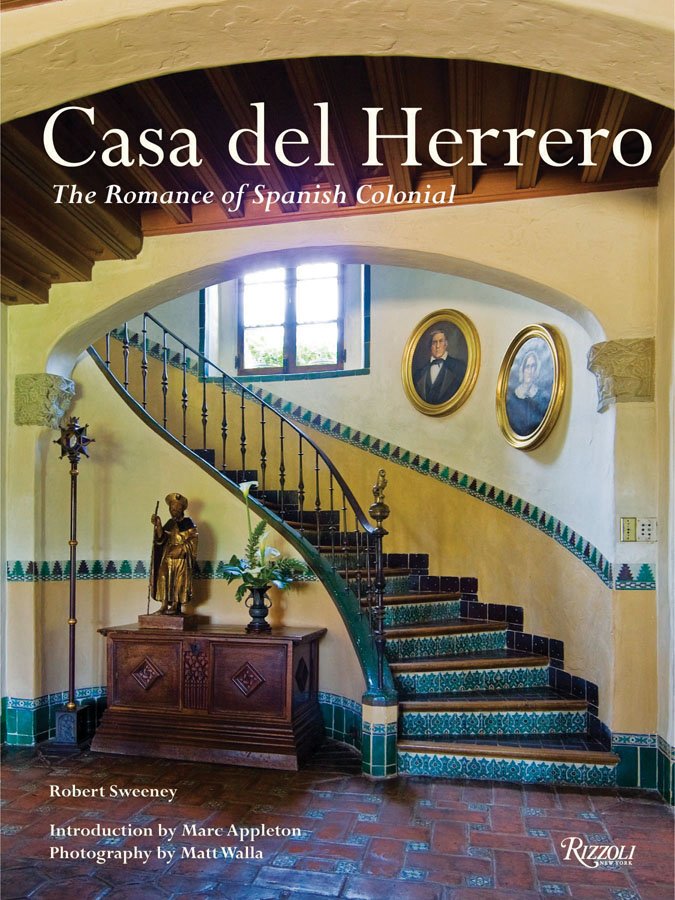Polishing a Hidden Gem
Written by Joan Tapper
Photographs by Matt Walla/Rizzoli
The history of CASA DEL HERRERO—House of the Blacksmith—and of Santa Barbara are inextricably linked: On the morning of June 29, 1925, George Fox Steedman, owner of his family’s foundry in St. Louis, was staying at the Santa Barbara Club when a devastating earthquake hit the city, leveling most of downtown. He headed for his new home in Montecito, which had just been finished after three years of construction. The Andalusian farmhouse-style residence was fine, cementing architect George Washington Smith’s reputation and distinguishing the home as an early example of Santa Barbara’s prevailing Spanish look.
Steedman and his wife, Carrie, embraced the growing fashion for the Spanish Revival style, and Smith’s plans for the 7,000-square-foot residence incorporated arches, wrought iron, loggias, a red-tile roof, and Moorish accents, like the thousands of colorful tiles that grace fireplaces, fountains, and walls. To furnish the home, the Steedmans commissioned Hispanic art experts Arthur Byne and Mildred Stapley, and traveled with them around Spain, acquiring centuries-old treasures that eventually packed 160 containers.
The Steedmans brought on Ralph Stevens to develop the garden and grounds, which soon encompassed 11 acres. In the back of the house, the garden extends from a loggia down a long grassy allée, while the rest of the extensive grounds are divided into a series of “rooms.” An enclosed Spanish garden opens to a blue-and-white garden with gorgeously tiled benches and a fountain. There’s an herb garden, a boxwood-edged rose garden, an Arizona garden, and extensive orchards. One of the most extraordinary features of the estate is the workshop, where mechanical engineer Steedman designed and crafted silver, other metalwork, and even garden furniture.
Charles Steedman died in 1940; Carrie passed away 22 years later. Medora Steedman Bass, who inherited the house from her parents, lived there until her own death in 1987, after which the family established a foundation that eventually opened the residence and grounds to the public in 1995. Visitors who come for docent-led tours are wowed by the place, which has maintained a low profile for the past three decades.
Now, however, it’s time for the Casa to step into the limelight—and ensure it is ready for its next 100 years. To begin, the foundation is leading up to its centennial with programming that more closely connects the place to the community.
“Medora Steedman Bass wished for the future of Casa to pursue and support the interests of her and her family,” says Edwin Rodriguez Jr., marketing and events director. These include “gardening, architecture, metalwork, silversmithing, restoration of the grounds, global problems, sustainability, population control, family planning, mental health, arts and literature, film, and several others.” Adds board chair Heather Biles, “We are working hard to open the doors of Casa del Herrero to a wider audience and to bring to the community new and interesting ways to experience the Casa.”
Meanwhile, the board is launching an $18 million capital campaign—headed by Palmer and Susan Jackson, who have kicked things off with a $1 million donation—to support preservation of its architectural legacy and protect the institution’s future. The hidden gem will be hidden no more. Santa Barbara architect Marc Appleton says, “The Casa, one of Santa Barbara’s best-kept secrets, is a unique, historic, and special place for the community of Santa Barbara to be able to enjoy, support, and cherish.” 1387 E. Valley Rd., Montecito, casadelherrero.com





